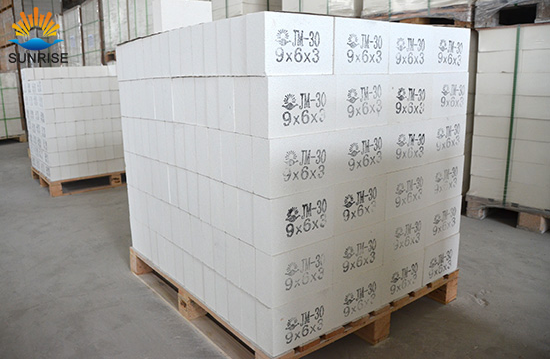Product Search
Quickly find the product you need
Products List
Refractory Knowledge
- Production Process Methods of Refractory
- Pollution and treatment in the production
- The Use of Mullite Insulation Bricks
- Classification of mullite insulation bric
- Aggregates Used For the Production of Ins
- Pros and cons of lightweight mullite bric
- Thermal Shock Resistant Fireproof Heat In
- the development of the refractory brick i
- Manufacturing process of fire clay insula
- Refractory material production process
Products List
- Phone:0086-370-63838939
- Email:sales@sunriserefr.com
- Office Address: No.36 Fengchan Road Of Zhengzhou, Henan, China (Mainland)
The Molding and Methods of Refractory Brick
Date:2017-01-12 17:20 | From:Zhengzhou Sunrise Refractory | Author:admin
Refractory brick's molding in the manufacturing process, refers to the refractory raw materials recuring to outside force and the model, making the blank will be processed into specified dimension
and shape. However, the flow castable's construction of the latest development does not need basically external forces.
The molding of mullite insulation brick, firstly is to satisfy the using demand of the products, when refractory brick masonry, the requirement of products must have a certain shape, precise size,
and enough strength. Secondly, molding is also the efficient way to improve the physical and chemical properties of products, by shape can improve the organizational structure of
products. Refractory brick has a lot of molding methods, the traditional processing methods according to how much moisture content can be divided into:

1. Semi-dry method: its blank moisture is around 5%, suitable for blank of different clinker content(50% 100%).
2. Plastic method: its blank moisture is around 15%, suitable for manufacturing large or complicated shape of the products.
3. Grouting method: its blank moisture is around 40%, is suitable for all kinds of hollow thin-walled refractory materials in production.
The modeling methods of refractory brick have a lot, the common used molding ways contain organic pressure molding, vibration molding, extrusion molding, ramming forming, isostatic pressure
molding, casting molding, grouting, etc.
and shape. However, the flow castable's construction of the latest development does not need basically external forces.
The molding of mullite insulation brick, firstly is to satisfy the using demand of the products, when refractory brick masonry, the requirement of products must have a certain shape, precise size,
and enough strength. Secondly, molding is also the efficient way to improve the physical and chemical properties of products, by shape can improve the organizational structure of
products. Refractory brick has a lot of molding methods, the traditional processing methods according to how much moisture content can be divided into:

1. Semi-dry method: its blank moisture is around 5%, suitable for blank of different clinker content(50% 100%).
2. Plastic method: its blank moisture is around 15%, suitable for manufacturing large or complicated shape of the products.
3. Grouting method: its blank moisture is around 40%, is suitable for all kinds of hollow thin-walled refractory materials in production.
The modeling methods of refractory brick have a lot, the common used molding ways contain organic pressure molding, vibration molding, extrusion molding, ramming forming, isostatic pressure
molding, casting molding, grouting, etc.

